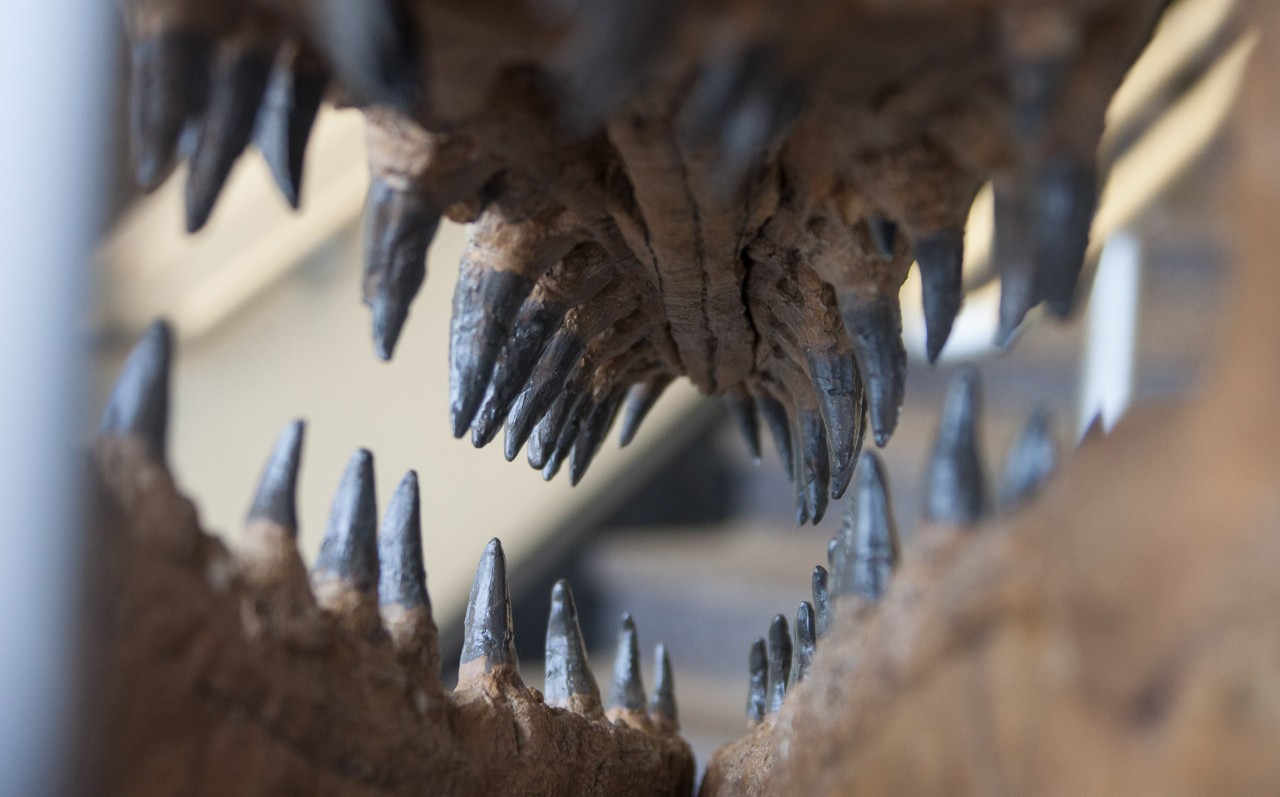
A toothy debate
UC mosasaur expert discusses new species discovered in Morocco
The Globe and Mail turned to a University of Cincinnati expert on mosasaurs to explain how researchers study teeth for clues about prehistoric species new to science.
UC College of Arts and Sciences Associate Professor Takuya Konishi studies ancient marine reptiles called mosasaurs that ruled the oceans more than 66 million years ago.
The Canadian news outlet reached out to Konishi to discuss a scientific debate over the fossils of a mosasaur discovered in Morocco that some researchers say is a species never before documented. The specimen features bladelike teeth like a shark's that differ from the conical teeth often associated with other mosasaurs.
Konishi was not a member of the team that made the discovery but studies ancient marine reptiles in his UC biology lab.

UC Associate Professor Takuya Konishi studies mosasaurs in his biology lab. Photo/Joseph Fuqua II/UC
Now a group of scientists from Alberta is asking if the specimen uncovered by phosphate miners could have been altered like some fossils sold in Morocco's lucrative private fossil trade to make them more appealing to collectors.
Natural history has myriad examples of specimens new to science that were the subject of scientific controversy. Paleontology, in particular, has seen a dramatic evolution in our understanding of what these ancient animals looked like, what they ate and how they moved because there are no living comparisons. Researchers often must make inferences and calculations based on a scant fossil record.
Konishi told the Globe and Mail that he thinks experts who study ancient reptilian teeth could help shed light on the new discovery.
In the meantime, researchers told the news outlet they plan to conduct a CT scan on the specimen.
Konishi was part of a team of scientists who described a new species of Japanese mosasaur in 2023 that he and his colleagues called the Wakayama Soryu, which means blue dragon. Dragons are creatures of legend in Japanese folklore, Konishi said.
Read the Globe and Mail story.
Featured image at top: A view from within the toothy jaws of a mosasaur reproduction in UC's Department of Biological Sciences. Photo/Ravenna Rutledge/UC Marketing + Brand

UC Associate Professor Takuya Konishi was lead author of a 2023 paper in the Journal of Systematic Paleontology describing a new species of Japanese mosasaur called the "blue dragon." Graphic/Provided
Related Stories
World class: Alumni travel program connects Bearcats on global scale
January 7, 2026
Most people have a natural curiosity to see the world. Meanwhile, most Bearcats enjoy being around other Bearcats. Alumni can check both boxes through the UC Alumni Association’s travel program, which offers about half a dozen excursions each year to fascinating places around the globe.
UC launches Bearcat Affordability Grant
January 7, 2026
The University of Cincinnati is making college more attainable for students across Ohio with the creation of the Bearcat Affordability Grant. The new grant will provide a pathway to tuition-free college for students of families who make less than $75,000 per year. Beginning in fall 2026, the Bearcat Affordability Grant will cover the remaining cost of tuition for Ohio residents who are Pell eligible.
How aerospace is turning to trustworthy AI
January 6, 2026
UC College of Engineering and Applied Science graduate Lynn Pickering talks to the Ohio Federal Research Network about her research into artificial intelligence and the future of AI in aerospace engineering.
